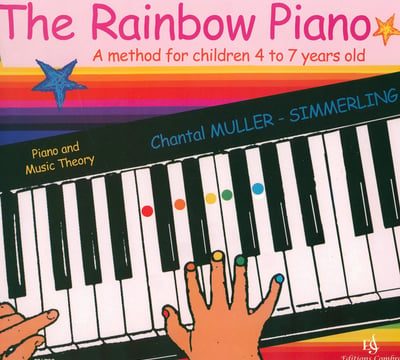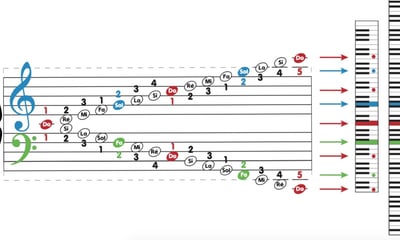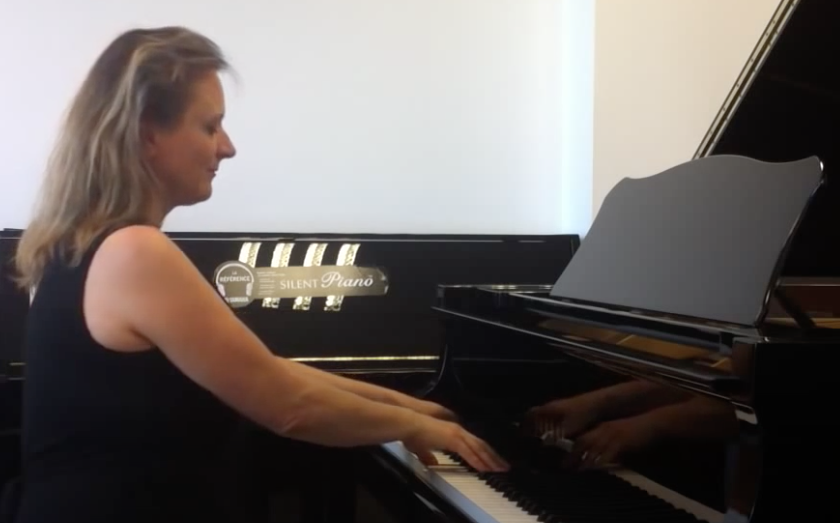
Learn Piano with Colors
The Rainbow Piano Method: a fun and easy way to learn piano for kids 😀🌈🎹
Engaging Lessons
Colorful approach to learning music easily.
Explore sound and light connections.
Innovative method for young learners.
Playful Learning
Music Education
About Us
The Rainbow Piano method is an innovative and engaging approach to teaching piano to young children. By creating a unique connection between colors and sounds, this method makes learning the piano simple, enjoyable, and accessible for kids aged 3 to 7.




Parent Testimonials
The colors made learning so intuitive. In three months, my son is already playing small melodies.
Marc, father of Thomas (4 years)
The Rainbow method has transformed piano learning into a game. Léa asks to practice on her own!"
Sophie, mother of Léa (5 years)
★★★★★
★★★★★
A Blend of Science and Education 🎹
Inspired by Newton's theory, which suggests a correlation between electromagnetic frequencies of sound and light (colors), The Rainbow Piano method uses this concept in a playful and educational way. While some scientists explore the relationship between sound vibrations and light waves, this method focuses on making music education fun and effective rather than purely scientific.
Why Kids Love It 👫


Children love The Rainbow Piano because it’s easy to understand and visually appealing. The combination of colors, clear instructions, and hands-on practice builds confidence and fosters a love for music from an early age.




A Message to Piano Teachers 👨👧👦
The Rainbow Piano method is a wonderful tool for teachers who want to share their passion for music with young learners worldwide. By using this method, you can make piano lessons accessible, enjoyable, and rewarding for millions of children.
Mozart himself started playing piano at just 2 or 3 years old—who knows what musical prodigies might emerge from your classroom? Let’s inspire the next generation of musicians together!
In France, "Le Piano Arc-en-Ciel" (The Rainbow Piano) has introduced thousands of children to the joys of playing piano. It has helped democratize an instrument often seen as complex or reserved for the elite. Its popularity has grown internationally, including in China, where it has become a bestseller. Teachers worldwide are recognizing its effectiveness in fostering musical skills and enthusiasm among children.
Proven Success in France and Beyond 🌎


How It Works?
The Rainbow Piano method simplifies music learning by combining visual aids with hands-on practice:
Color-Coded Notes: Large, brightly colored notes (A = purple, B = rose, C = red, D = orange, E = yellow, F = green, G = blue) are paired with matching stickers on the piano keys. This visual association helps children quickly understand note placement on the keyboard.
Simple Approach: The focus is on just five notes (C, D, E, F, G) for each hand at the center of the keyboard. This simplicity ensures clarity and keeps learning fun for little ones.
Vertical Keyboard Representation: Unique to this method, the book includes vertical piano keyboards alongside horizontal music staves. By turning the book 90 degrees, children can see how notes on the staff align with keys on the piano. This clever design makes sight reading intuitive for young learners.


The author


Chantal Muller, born in 1964 in Lorraine, France, is a distinguished pianist, composer, psycho-sociologist, and author of innovative piano teaching methods such as Le Piano Arc-en-Ciel and Piano Color. She grew up in a family of musicians and began her musical education at the Conservatoire National de Région (CNR) of Metz, where she obtained her Diplôme de Fin d'Études in piano and solfège in 1983. She later perfected her skills at the Conservatoire de Paris, earning a Premier Prix de piano with a Gold Medal in 1989 under the tutelage of Valery Sigalevitch, a virtuoso trained at the Moscow Conservatory.
In addition to her musical achievements, Chantal pursued academic studies in philosophy (Paris I Panthéon-Sorbonne) and social psychology (Université Paris XIII), earning a D.E.S.S. (Master). Her interdisciplinary expertise has shaped her pedagogical approach, emphasizing psychology as the foundation of effective music education. This led to the creation of her celebrated methods designed to modernize piano and solfège instruction.
Professionally, Chantal has performed as a pianist in jazz festivals, piano bars, and prestigious venues while teaching piano at conservatories and music schools. She is also a member of SACEM (Society of Authors, Composers, and Publishers of Music) and has composed works for piano that are featured in international competitions. Currently, she is dedicated to promoting her methods globally among French-, English-, and Chinese-speaking educators.
Get in touch
A fun and easy way to learn piano for kids


